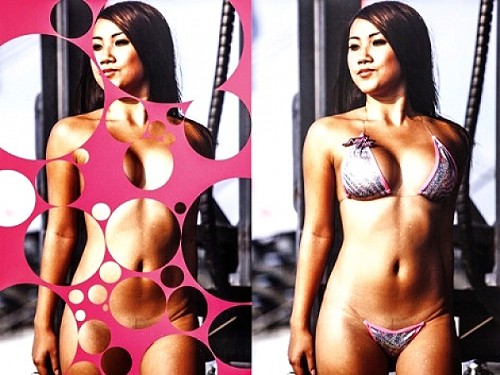It’s long overdue. The first-ever Utah Biennial art exhibit at the Utah Museum of Contemporary Art assembles the most representative Utah contemporary art, after the art world tradition of the Venice Biennale. Titled Mondo Utah—after the 1996 book about Utah folklore by local filmmaker Trent Harris—the title implies that Utah is its own world (literally “mondo”) and also references the 1962 sensationalistic documentary Mondo Cane.
The Beehive State reveals itself like an onion, peeling away layer after layer. Utah begins to seem like a metaphor—but for what? Looking at these myriad artistic visions, it appears that Utah is the most eccentric place on Earth. But there’s a paradox in being a center of the eccentric, where various manifestations of unusual spirituality and mythology are proposed as a repository of truth. “Look at this exhibition the way you’d look at [Harris’] book,” suggests UMOCA Senior Curator Aaron Moulton. “Some stories don’t readily connect to the next, but some do. Utah provides its own structure.”
Guest-curated “shows within the show” include Faithful Abstraction, curated by Central Utah Art Center founder Adam Bateman, who explains, “I’m interested in the coded language people use to talk about their faith.” The difficulty of representing spirituality through visual media is confronted by UltimusMormon (an online alias), who uses a “bubbling” technique to allow one to “see” pornography without really viewing it. A picture of a woman in a bikini is layered under a colored box with cut-out circles; just her bare skin appears through the bubbles, with the outlines obscuring her clothing and creating the optical illusion that she’s nude. Jason Metcalf’s “A Paved Work of Pure Gold”—an aluminum panel plated with gold—is a test of the old saying that God can only appear over something as pure as gold, as though divinity might actually reveal itself within the space of the show.
More “official” representations of spirituality come from the LDS Church History Museum, curated by Laura Allred Hurtado. Mormonism isn’t the only form of spirituality that has found “the place” here; the religious group Summum, which practices mummification, is represented by several artifacts in the exhibit, including a coffin-like “mummification vehicle.”
While abstract notions of spirituality have been part of the state’s history, Utah as a physical, geographical entity has also borne the symbolic weight of the early settlers’ belief that “this is the place.” A Sublime of Conceptual Landscapes provides a retrospective of works from the former Salt Lake Art Center’s collection compiled around that idea. The area was seen by early residents of “Deseret” as a blank slate to forge a space for their own idealistic visions, even using their own Deseret alphabet, utilized in the mixed-media collages of the late Bob Moss, himself an eccentric local character. Metcalf’s found-art guidebook “A Historical Tour of the Kingdom of Deseret” provides an interactive journey to local landmarks.
The most personal work in the entire exhibit, Annie Kennedy’s two “72-Hour Survival Blankets,” is still loaded with local cultural totems, as well as items that resonate personally, like her father’s fishing knife. Items encased in Seal-a-Meal bags could actually be opened and used in an emergency, requiring literal as well as symbolic unpacking.
The architecture of the exhibit—its arrangement in the gallery space, the way parts reflect and refer to each other, and smaller exhibits within the main “mondo”—creates reverberations between works that make Utah contemporary art seem like not only “a parallel art world,” as Moulton calls it, but a universe, a veritable constellation of images ripe with significance.
Well-known artists only tangentially connected to Utah who had stories that might fit in a Mondo Utah-type book are also seen, like film of Andy Warhol’s 1967 visit to the University of Utah in the form of an imposter, or performance artist Chris Burden’s 1974 UMFA performance of hanging himself wrapped in a sheet between two paintings. A history of local filmmakers, including Harris, also showcases some of their works.
“This exhibition is an introduction with table of contents,” Moulton says. “Someone else could write the book.”
UTAH BIENNIAL: MONDO UTAH
Utah Museum of Contemporary Art
20 S. West Temple
801-328-4201
Through Dec. 14
Free
UtahMOCA.org
More by Brian Staker
-
Live Music Picks: April 12-18
Judas Priest, The Residents, Clownvis Presley, The Breeders and more.
- Apr 11, 2018
-
Loving the Alienation
Helios Creed and Chrome continue making iconoclastic music for outcasts.
- Mar 28, 2018
-
Live Music Picks: March 22-28
U.S. Girls, Ed Schrader’s Music Beat, Hell’s Belles, Columbia Jones and more.
- Mar 21, 2018
- More »



